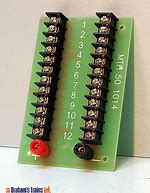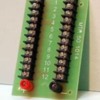Hi all! I'm sure this question has been asked many times and i am sorry to post it again but i am lost!
I have a layout, L shaped approximately 20 x 16. The basic shape has been down and i have small cw 80 transformer with one lock on attached. I have tubular track and i only run conventional although I just got a lionchief set that i can't wait to run. Anyway, the basic shape is there now. I have a cw80 transformer attached with one lock on and every so often I run a train around. Simple and easy. I have several 022 switches in place where i will add sidings and a couple of accessory tracks in place. I have not touched my layout in over a year because I started a new job and in the summer I spend all my time on the water. Now that winter is here, yeah Ohio, I want to work on my layout. I will be attaching a kw transformer to the layout so i have two questions.
1) I understand that with a layout this size I will need to add more power. I have a ton of extra lock ons. I also have a few terminal blocks that I bought at the hardware store too. What the best way to add the power from the transformer to the rest of the layout? i know that every 6 feet or so I need to add power. Do i run a wire from the transformer to each lock on or can i run from lock on to lock on? I saw a video from Lionel about running a bus wire but I am not sure how that would work. I do like that idea because there was something in there about adding a toggle switch to the sidings to switch out different engines when i park them which i do want to do.
2) Even though the switches do not have all the sidings in place and i have it so that the train can switch from one track to another (i only want to run one train around the layout at a time) I know that I want to add constant power to the switches via the fixed voltage plug. I have the plugs but where do i connect it to? Do i run the wire from each switch (i have 10 currently, i could add more) back to the transformer? Do i run the bus line thing again? Terminal blocks?
I appreciate the help. I know this is easy for some people but for me it is not always the easiest especially because my job does not let me come home every night so i don't always get to work on stuff. Please don't make me feel stupid! Thanks!
Dave









